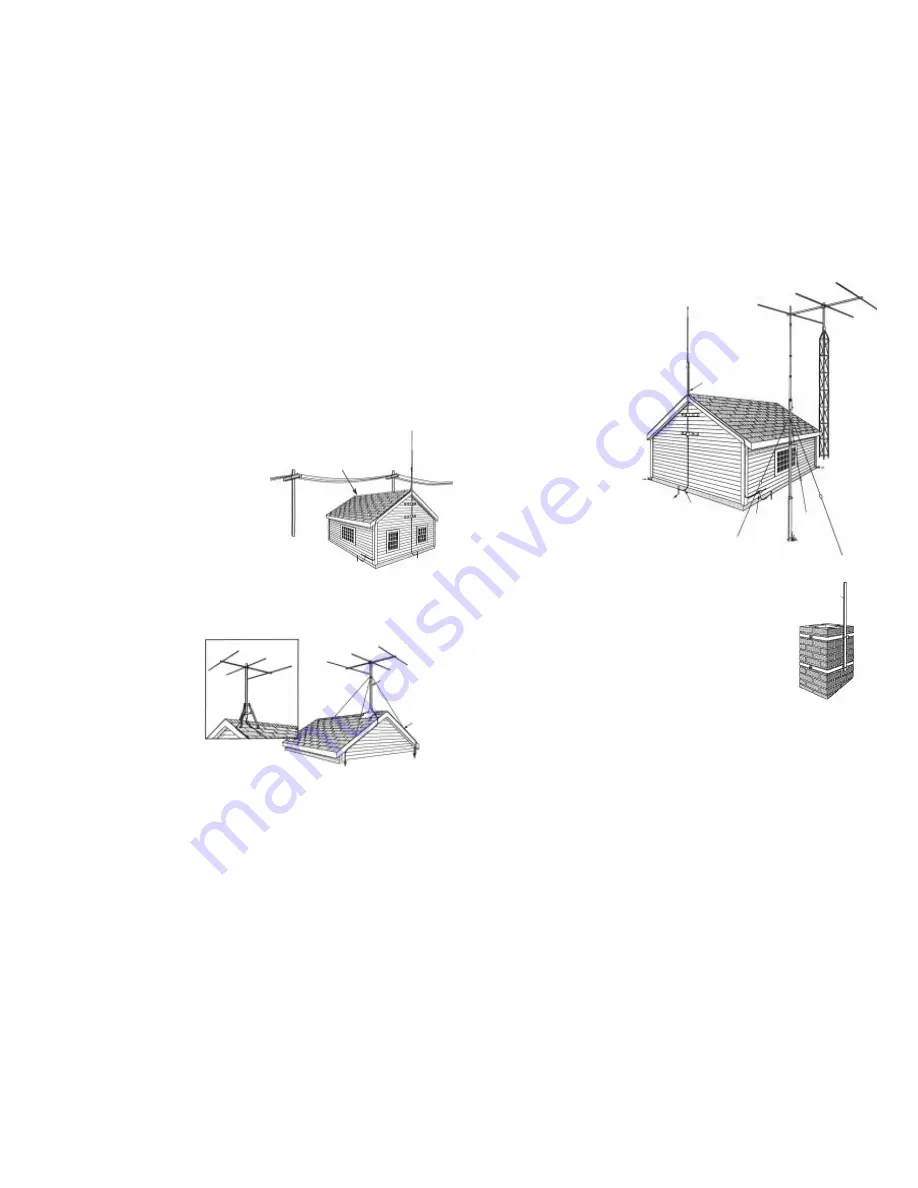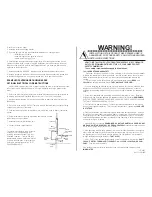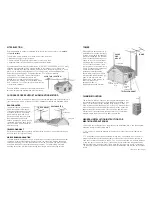
TOWER
Tower safety is paramount to a good
installation and requires that you take
location, tree growth, soil depth, and
proximity to buildings into consideration.
Tower foundations must be securely
based on a solid concrete/tower
mounting plate. An alternative is to sink
a 4 to 6ft section of tower into a
concrete base for an extremely rugged
mount. Proper guying is essential to
a safe, weather-resistant
installation that must handle
severe wind loading and is best
accomplished with preformed guy
grips, torque brackets, and
turnbuckles. When working on
towers, always use a
safety belt made of
high-quality web-type material.
CHIMNEY MOUNTING
The chimney is often an easy and convenient mounting place, but
the chimney must be strong enough to support the antenna in high
winds. Do not use a chimney that has loose bricks or mortar. A
good chimney mount makes use of a 5 or 10ft, 1.25 diameter steel
mast, and a heavy duty two strap clamp-type bracket. Install the
upper bracket just below the top course of bricks and the lower
bracket two or three feet below the upper bracket. For maximum
strength, space the brackets as far apart as possible.
GENERAL INSTALLATION INSTRUCTION FOR
MAST-MOUNTED ANTENNAS
1. Assemble your new antenna on the ground at the installation site. Keep the separate
assembly instructions that came with it.
2. On the ground, clamp the antenna to the mast and connect the coaxial cable to the
antenna.
3. To insure that the mast does not fall the wrong way if you should lose control of it
during the installation or takedown, durable nonconductive rope should be secured at
each two foot level as the mast is raised. The boss should stand in a position where he
or she can yank or pull on the ropes if the need arises to deflect the falling mast away
from hazards (such as power lines) into a safe fall (such as into a yard or driveway).
The ropes are tied taut at the base of the mast after installation and in place at the various
levels.
(contd on next page)
mast
ROOF MOUNTED
TRIPOD MOUNT
coaxial cable
ground wire
AVOID THIS LOCATION
SITE SELECTION
Before attempting to install your antenna, think where you can best place it for
safety
and
performance.
To determine a safe distance from wires, power lines, and trees:
1. Measure the height of your antenna.
2. Add this length to the length of your tower or mast, and then
3. Double this total for the minimum recommended safe distance.
If you are unable to maintain this safe distance, STOP! GET PROFESSIONAL HELP. Many
antennas are supported by pipe masts attached to the chimney, roof, or side of the
house. Generally, the higher the antenna is above ground, the better it performs. Good
practice is to install your antenna about 5 to 10ft above the roofline and away from
power lines and obstructions. Remember that the FCC limits your antenna
height to 60ft. If possible, find a mounting place
directly above your transmitter, where the
antenna wire can take a short vertical drop on
the outside of the building for entry through a wall,
duct, or window. Your dealer carries a complete line
of installation hardware.
The safe distance from power lines should be at least
twice the height of the antenna and mast combined.
CHOOSE A PROPER SUPPORT AND MOUNTING METHOD
However you decide to mount and support your antenna, always make sure that safety is
your first concern. Some of the more common installation methods are illustrated below.
ROOF MOUNTED
The swivel feature of universal
type mounting brackets makes a
convenient antenna mount for flat
or peaked surfaces. One clamp
type bracket is used with 3 or 4
guy wires equally spaced around
the mast and anchored to the
surface by eyebolts. Apply roofing
compound around the base of the
bracket, screws, and eyebolts for
moisture sealing.
TELESCOPING MAST
Guy wires should be equally spaced in at least three directions. Use at least three guy
wires for each 10ft section of mast.
SIDE OF BUILDING MOUNTING
The safe distance from power lines is at least twice the height of the antenna and mast
combined. Where roof overhang is not excessive, the side of the building provides a
convenient mounting. Position the brackets over a stud if possible, one over the other,
and space them two or three feet apart along the mast. For metal siding, first mark
mounting holes, then drill pilot holes through the siding to accept mounting screws.
TOWER
HOUSE
SIDE
MOUNT
TELESCOPING MAST
coaxial cable
mast
grounded
ground
wire
static
discharge
unit to
ground rod



















